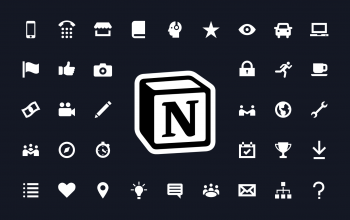Easy And Fun Ways to Keep Moving Despite the Cold
Elijah Gardner, Contributor
As snowfall blankets Toronto, it gifts us the perfect opportunity to cozy up indoors and enjoy a season of rest and rejuvenation. While this downtime can be restorative, it becomes even more beneficial when we intentionally include movement in our winter routines.
As a third-year Kinesiology student with a minor in Psychology and Don here at St. Michael’s College, I’m passionate about the connection between movement and well-being, and I’d love to share why staying active during the winter months is not just a choice but a gift to ourselves; one that can transform how we experience this season of stillness.
Why Move More in Winter?
Winter, with its shorter days and colder nights, can sometimes feel like a season of hibernation. Research shows that regular physical activity is a powerful ally for your mental health, alleviating symptoms of anxiety and depression while elevating your mood (Nuzum et al., 2020). Beyond the individual benefits, movement also fosters connection. We are not meant to brave the winter cold alone; collaborative activities, like group workouts or skating with friends, strengthen social bonds (Eime et al., 2013).
Even the smallest increments of movement can yield profound results. The dose-response relationship for physical activity shows that the greatest spike in health benefits occurs when we transition from inactivity to even modest levels of movement (Schuch et al., 2018). This means that every step, stretch, and skate contributes to a healthier, happier you.
The Risks of Inactivity
While the allure of staying indoors is undeniable, prolonged inactivity during winter carries hidden risks. Studies indicate that cardiac events increase during colder months, often linked to elevated blood pressure and sudden exertion, such as shoveling snow after periods of rest (Mason et al., 2002; Miller et al., 2001). Cold temperatures themselves can raise blood pressure, posing additional risks for those with hypertension (Matsumoto et al., 2010).
Sudden, intense activity, like lifting heavy snow or winter sports, without preparation can strain the body. The Valsalva maneuver, a technique used to stabilize the body during heavy lifting, can increase intra-thoracic pressure, potentially leading to dizziness or heart-related issues in unprepared individuals. Our bodies are extraordinary; we only have one, and how we care for it now determines how far it can take us and the amazing experiences we’ll get to share.
Tips for Safe Winter Activity
- Start Small and Progress Gradually
The Latin root of “amateur” is amator, meaning “lover.” There is no shame in being a beginner. Choose activities that spark joy; whether it’s a short walk, a morning stretch, intramurals, or a beginner’s class. Fall in love with the process, document your journey, celebrate small victories, and take the time to build up your strength and confidence.
- Push, Don’t Lift
When shoveling snow, push it rather than lift to minimize strain on your body. If lifting is necessary, use proper form and take frequent breaks. Remind your loved ones to do the same!
- Dress for Success
Layer up with moisture-wicking clothing to keep your muscles warm and reduce the risk of strains. Don’t forget gloves with a good grip to prevent accidents, and ensure your footwear provides traction on icy surfaces.
- Bring a Friend
Invite a friend or family member to join you for a walk, skate, or workout. Social physical activities not only boost your mood but also help you stay accountable and connected, making cherished memories along the way.
Ways to Stay Active at St. Mike’s
There are plenty of ways to stay active during the winter months here at SMC:
- Join Run Club every Wednesday at 7 PM (@smcruns on Instagram).
- Skate at the SMCSU rink (open 9 AM–11 PM) just outside the Quad.
- Participate in winter intramurals or explore drop-in clubs/activities at our Wellness Studio, Hart House, The Athletic Centre, or Goldring.
These activities are not only great for your physical health but also support cognitive function, reduce stress, and combat the effects of prolonged inactivity—perfect for balancing and complementing your busy school term.
Canadian winter is not a season to endure; it’s an opportunity to embrace! By incorporating movement into your daily routine, you honour your mind and body while building lasting connections. Here’s to a winter semester filled with warmth, movement, and care for one another. Stay well, SMC!
Photo Credit: Eli Gardner




